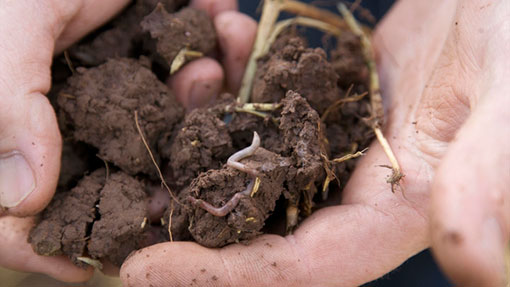11-step guide to assess flood-damaged grassland

Farmers need to assess their grassland after flooding when water levels subside to target areas of serious concern and return these to optimum performance.
Treatment of waterlogged pasture may be needed to ensure enough grass is available for grazing and silage.
Fields that have been under water may have lower yield and nutrient levels so a detailed assessment is key to prioritising repair efforts.
EBLEX has created an 11-step “grass MoT” to assess the damage.
MoT criteria
Soil testing
It’s not too late, sampling costs about £10 a field. Targets to prevent poor yield, low clover and high broad-leaved weed content are as follows; pH 6.0-6.5, phosphate 16-25mg/l, potash 121-180mg/l and magnesium 5-100mg/l.
Compaction
Dig a 30cu cm hole, if soil profile feels tight use an aerator to relieve compaction in the top 15cm. Deeper compaction will need a sward lifter or plough in spring or autumn when conditions allow.
Worms
Less than six could mean soil is too dry, wet, acidic, alkaline, compacted or low in organic matter. Correcting pH and drainage levels, improving soil structure can help increase worm numbers, improving plant growth.
Root depth
Any shorter than 15cm plant productivity will be seriously affected. Soil is likely to be compacted or low in phosphate.
Colour
Mottled grey and rusty soils result from poor drainage and anaerobic conditions (without oxygen). Compaction and drainage need attention to prevent these cold and low nutrient soils leading to poor growth.
Smell
Foul and rancid smelling soils also result from poor drainage and anaerobic conditions and requires the same treatment.
Ground cover
If less than 50% of temporary leys or less than 85% of permanent pasture remains, weeds are likely to invade, lowering output/ha. Causes include fertility, structure and grazing management and can be identified through soil test results, looking for compaction and at sward heights.
Broad-leaved weeds
If more than 10% of cover is weeds, output per ha will decrease. Use chemical or physical control to remove the weed but protect clover in the sward.
Clover
Levels less than 10% in spring or less than 15% in autumn suggest poor fertility or grazing management issues. Soil tests and sward height measurements will identify key problems.
Weed grasses
If more than 50% of cover is unsown grass or weeds a full reseed may be necessary. Causes include fertility, structure and grazing management and can be identified through soil test results, looking for compaction and at sward heights.
Sward heights
Reduced utilisation where swards reach more than 10cm for sheep or more than 15cm for cattle will degrade feed quality and increase costs. Regular monitoring with a sward stick or plate meter improves grassland management.
